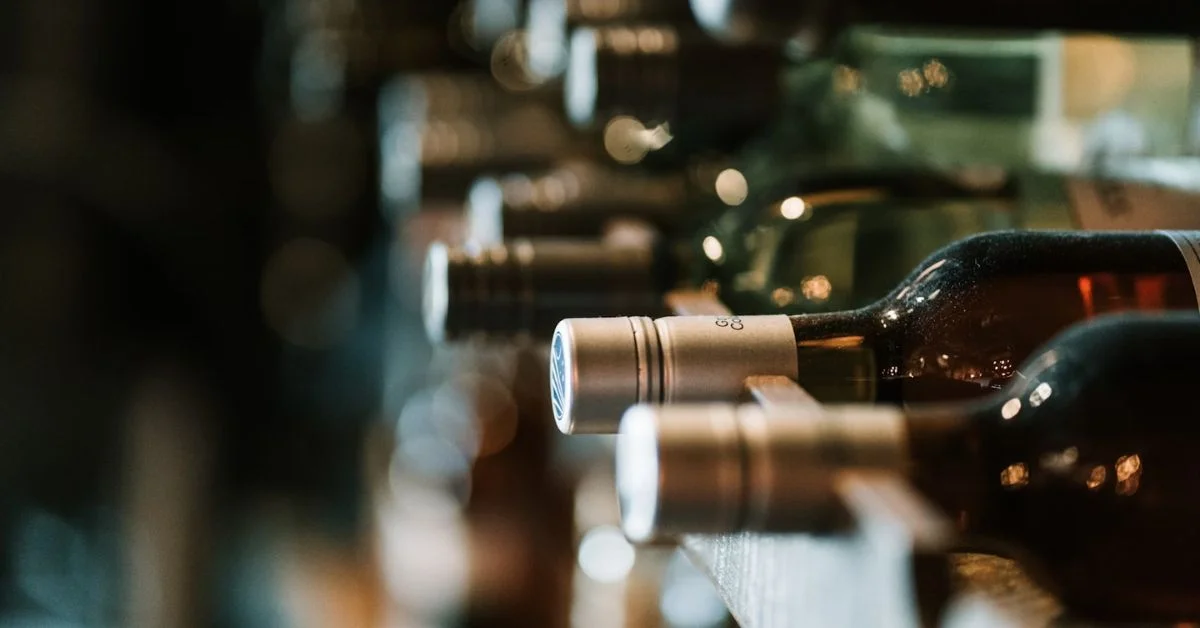Uncategorized
Starting Your Wine Making Journey: Essential Tips

This pursuit not only allows you to explore the rich flavors and aromas of various grapes but also offers the joy of creating something truly unique.
Whether you are a novice eager to make your first batch or an enthusiast looking to refine your skills, the key to successful winemaking lies in understanding the fundamental processes and the essential equipment needed.
With dedication and a bit of patience, you can transform simple ingredients into extraordinary wines that reflect your personal taste and style.
Understanding Wine Cellaring
Creating the perfect wine starts with understanding the nuanced art of cellaring.
A wine cellar is more than just a storage space; it’s an environment specifically designed to optimize the aging process of wine.
Proper cellaring helps maintain the wine’s quality, enhances its flavors, and allows it to mature gracefully over time.
- The Role of Temperature and Humidity: Maintaining a consistent temperature and humidity level is crucial in a wine cellar. The ideal temperature range is between 50-57°F, and humidity should be around 60-70%. These conditions ensure that wines age slowly and develop complexity without the risk of drying out the cork or promoting mold growth.
- Protection from Light and Vibration: Wines are sensitive to light and vibration, both of which can accelerate aging and degrade the wine’s quality. Cellars should be dark or have minimal lighting, and bottles should be kept in a stable, vibration-free environment to preserve their integrity over time.
- Organization and Accessibility: Efficient organization within a cellar not only maximizes space but also makes it easier to manage your wine collection. Wines should be cataloged and arranged in a way that makes them easily accessible, with labels facing up to avoid unnecessary movement and disturbance
Wine Aging
Aging wine is a transformative process that enhances its taste and aroma. While not all wines are made to age, those that do can develop more nuanced flavors and aromas over time.
- Chemical Changes During Aging: As wine ages, chemical reactions occur between acids, sugars, and compounds known as phenolics. These reactions can lead to the development of new flavors and aromas, such as nutty, spicy, or woody notes, which are not present in younger wines.
- Choosing the Right Wine for Aging: Not all wines benefit from long-term aging. Typically, wines with higher levels of tannins, acidity, and alcohol are better candidates for aging. These components act as preservatives, allowing the wine to evolve favorably in the cellar.
- Timing and Patience: The aging process can vary widely, ranging from a few years for white wines to decades for some reds. The key to successful aging is patience and timing; knowing when a wine has reached its peak and is ready to drink is as much an art as it is a science.
By understanding the principles of wine cellaring and the process of aging, you can greatly enhance your winemaking and ensure that each bottle reaches its fullest potential.
Choosing The Right Grapes For Winemaking
Selecting the appropriate grapes is fundamental to crafting exceptional wine.
This decision shapes the wine’s flavor, aroma, and overall character, making it crucial to understand the different variables that influence grape quality and suitability.
Understanding Grape Varieties And Climate Influence
The choice of grape variety is pivotal and should align with the climatic conditions of the region where they are grown.
Cool climate regions like Germany and Oregon are renowned for producing light-bodied wines with high acidity and distinct fruit flavors, making varieties such as Riesling and Pinot Noir ideal.
In contrast, warm climates like those in Australia and Argentina favor full-bodied wines with rich fruit flavors, making varieties like Cabernet Sauvignon and Merlot more suitable.
Importance Of Soil Type
Soil composition plays a critical role in the development of grapes. Different soil types, such as sandy, clay, and loam, offer varying benefits.
For instance, sandy soils, which are well-draining, tend to produce light-bodied wines with low tannins, whereas clay soils, which retain more water, are beneficial for producing full-bodied wines with high tannins.
Choosing Grapes Based On Wine Style
The desired style of wine also dictates the choice of grapes. If a more robust, tannic wine is the goal, grapes that have undergone longer maceration periods, where the skins are left in contact with the juice to extract tannins and colors, are preferable.
This is typical for red wines. For lighter, less tannic wines, a shorter pressing and less contact with skins is advised.
Selecting High-Quality Grapes
When purchasing grapes, it’s essential to inspect their quality meticulously. Look for grapes that are firm, plump, and free from visible signs of mold or rot.
The sugar and acid levels of the grapes should also be tested, as these will influence the fermentation process and the balance of the final product.
Consider The Source
Finally, the source of your grapes can significantly impact the quality of your wine.
Opt for reputable suppliers known for their high-quality grapes and proper handling procedures. If possible, sourcing grapes from local vineyards can ensure freshness and support sustainable practices.
Key Takeaway
Starting your winemaking journey involves a mix of artistry and science, with careful attention to details like grape selection, cellaring, and aging.
Each aspect, from choosing the right grapes that match your regional climate and soil, to understanding the delicate balance required in cellaring and aging, plays a pivotal role in the creation of a delightful wine.
By selecting high-quality grapes, controlling the cellar environment, and patiently aging your wine, you ensure that each bottle reaches its full potential.
As you embark on this rewarding endeavor, let creativity guide your winemaking process, transforming simple ingredients into expressions of your unique taste.

Uncategorized
Barbells and Beyond: The Allure of Apadravya Piercing

Apadravya piercing is a type of genital piercing primarily performed on the penis. It involves the insertion of a barbell horizontally through the glans of the penis, passing through the urethra. This piercing is known for its aesthetic appeal and potential enhancement of sexual pleasure.
The History and Cultural Significance of Apadravya Piercing
The practice of genital piercing dates back centuries and holds cultural significance in various societies worldwide. Historically, genital piercings were associated with rituals, rites of passage, or markers of social status. In some cultures, genital piercings were believed to enhance fertility or sexual potency.
Understanding the Procedure
Preparing for Apadravya Piercing
Before undergoing an Apadravya piercing, it’s crucial to choose a reputable and experienced piercer. Additionally, proper hygiene and genital grooming are essential to reduce the risk of infection during and after the procedure.
The Piercing Process
During the piercing process, the piercer will clean and sterilize the genital area before marking the entry and exit points for the piercing. Local anesthesia may be administered to minimize discomfort. The piercing needle is then carefully inserted, followed by the insertion of the barbell.
Aftercare and Healing
After the piercing, diligent aftercare is essential to promote proper healing and reduce the risk of complications. This includes cleaning the piercing with saline solution, avoiding sexual activity or rough handling of the piercing, and wearing loose-fitting clothing to prevent irritation.
Pain, Risks, and Safety Concerns
While Apadravya piercing is generally considered safe when performed by a professional, it is not without risks. Pain levels vary from person to person, but most individuals report moderate discomfort during the procedure and mild to moderate pain during the healing process.
Choosing Jewelry for Apadravya Piercing
Selecting the right jewelry for an Apadravya piercing is crucial for both aesthetics and comfort. Surgical-grade stainless steel or titanium barbells are commonly recommended due to their biocompatibility and durability.
ALSO READ: THIGH TATTOOS: A CANVAS OF EXPRESSION AND STYLE
Apadravya Piercing: Myths vs. Facts
There are many misconceptions surrounding Apadravya piercing, including beliefs about pain, sexual function, and hygiene. It’s essential to separate fact from fiction to make informed decisions about genital piercing.
Pros and Cons of Apadravya Piercing
Like any form of body modification, Apadravya’s piercing has its advantages and disadvantages. Pros may include aesthetic appeal, potential sexual enhancement, and personal expression, while cons may include pain, risks of infection, and social stigma.
Conclusion
Apadravya piercing is a significant form of self-expression and body modification with a rich history and cultural significance. By understanding the procedure, risks, and aftercare involved, individuals can make informed decisions about whether Apadravya piercing is right for them.
ALSO READ: MEMENTO VIVERE TATTOO: A TIMELESS REMINDER
FAQs
What is Apadravya?
Apadravya is a genital piercing where a barbell is inserted horizontally through the glans of the penis, passing through the urethra. It is valued for its aesthetic appeal and potential sexual enhancement.
Is Apadravya piercing painful?
Pain levels vary, but most people experience moderate discomfort during the procedure and mild to moderate pain while healing. Proper aftercare can help alleviate discomfort.
How can I find a reputable piercer for Apadravya piercing?
Look for experienced piercers with positive reviews and strict hygiene standards. Check their portfolio and ask about their sterilization practices before making an appointment.
Are there age restrictions for getting an Apadravya piercing?
Typically, individuals must be at least 18 years old. Some piercers may require parental consent for minors.
Can Apadravya’s piercing affect sexual function?
While rare, complications like nerve damage or scarring can affect sexual function. It’s important to consult with a qualified piercer about any potential risks.
Uncategorized
The Game Archives Gameverse Unveiled

Welcome to the exciting world of Game Archives Gameverse, where gaming history meets cutting-edge technology to create a gaming platform like no other. Dive into this immersive universe where classic games and modern innovations collide to offer gamers an unparalleled experience. Join us as we explore the evolution, features, successful case studies, and future plans of the Game Archives Gameverse – your gateway to endless gaming possibilities!
The History and Evolution of Game Archives
The history and evolution of game archives is a fascinating journey through the digital landscape of gaming. It all began with humble beginnings, where gamers sought ways to preserve their favorite games for future enjoyment. As technology advanced, so did the methods of archiving these virtual worlds.
From early floppy disks to CDs and DVDs, game archives have come a long way in preserving gaming classics. The transition to online platforms revolutionized how games were stored and accessed by players worldwide. This shift paved the way for more efficient archiving systems that could house vast libraries of games.
With each new innovation, game archives expanded their reach and capabilities, ensuring that beloved titles would not be lost to time. Today, the Game Archives Gameverse stands as a testament to this rich history, providing a platform where gamers can explore a treasure trove of timeless classics and modern favorites alike.
Features and Benefits of Using Gameverse
Gameverse offers a multitude of features that cater to both gamers and game developers alike. One key feature is its user-friendly interface, making navigation seamless for users of all levels. With Gameverse, players can discover a wide array of games from various genres in one centralized platform.
Another benefit is the personalized experience it provides. By curating game recommendations based on individual preferences, Gameverse enhances the gaming journey for each user. Additionally, the platform fosters community engagement through forums and social sharing options.
For developers, Gameverse offers a valuable opportunity to showcase their creations to a diverse audience. The platform’s analytics tools provide insightful data on player behavior and preferences, aiding developers in refining their games for optimal performance.
Furthermore, Gameverse supports cross-platform compatibility, allowing games to reach a broader audience across different devices. This flexibility not only benefits developers but also ensures accessibility for players wherever they may be.
How to Access and Use the game archives Gameverse?
To access the Game Archives Gameverse platform, simply visit their website and create an account. Once registered, you can browse through a diverse collection of games spanning various genres and platforms. The user-friendly interface allows for easy navigation, making it simple to discover new titles or revisit old favorites.
Using Gameverse is straightforward – select a game from the library and start playing instantly without any downloads or installations required. The platform offers seamless gameplay with no interruptions or lags, ensuring a smooth gaming experience for all users. Engage in single-player campaigns, multiplayer matches, or explore interactive storytelling adventures at your convenience.
Furthermore, Game Archives provides regular updates and additions to its game library so that players always have fresh content to enjoy. Whether you’re a casual gamer looking for quick entertainment or a dedicated player seeking immersive experiences, Gameverse has something for everyone.
Case Studies: Successful Games on the Gameverse Platform
Dive into the world of Gameverse, where successful games come to shine. One standout example is “Galactic Quest,” a space exploration game that captivated players with its stunning visuals and immersive gameplay. With Gameverse’s user-friendly interface, “Galactic Quest” quickly gained a loyal following.
Another hit on the platform is “Fantasy Realms,” an epic adventure game that transported players to magical realms filled with mythical creatures and quests. The seamless integration of in-game rewards through Gameverse kept players engaged and coming back for more.
“Virtual Racer,” a high-speed racing simulation, also found success on Gameverse by offering realistic driving mechanics and multiplayer competitions. Players could easily connect with friends and compete in adrenaline-pumping races.
These case studies illustrate how Gameverse has become a hub for innovative and engaging gaming experiences, attracting both developers and gamers alike.
Future Plans for Game Archives and the Gameverse
Exciting times lie ahead for the Game Archives and its innovative Gameverse platform. The future plans aim to expand the library of games available, offering a diverse range of genres to cater to all gamers’ preferences. Collaborations with indie developers are in the pipeline, fostering creativity and bringing fresh, unique gaming experiences to users.
Enhancements in user interface and experience are on the horizon, ensuring seamless navigation and immersive gameplay. Integration of new technologies such as VR and AR will elevate gaming interactions to a whole new level, promising an exciting evolution in virtual entertainment.
Community engagement initiatives will be a key focus moving forward, with tournaments, challenges, and events planned to foster camaraderie among players. Feedback mechanisms will also be enhanced to gather valuable insights from users for continuous improvement and innovation within the Gameverse ecosystem.
Stay tuned as Game Archives continues its journey towards shaping the future of gaming through cutting-edge technology and unprecedented user experiences. The possibilities are endless, making every gamer’s dream adventure just a click away!
Conclusion
In a dynamic gaming landscape where innovation is key, the Game Archives Gameverse emerges as a beacon of creativity and ingenuity. With its rich history, diverse features, and promising future plans, it is evident that the platform is set to revolutionize how gamers engage with their favorite titles.
As we delve deeper into the world of Gameverse, it becomes apparent that this platform offers more than just a place to play games—it fosters community, encourages exploration, and provides a space for both developers and players to thrive. The success stories showcased on Gameverse serve as testaments to its effectiveness in elevating gaming experiences.
Looking ahead, the future of Game Archives and the Gameverse holds boundless possibilities. With a commitment to constant improvement and adaptation to meet evolving needs in the gaming industry, this platform is poised for continued growth and success.
So whether you’re a seasoned gamer or just starting your journey into the world of interactive entertainment, consider exploring what the Game Archives Gameverse has to offer. It’s not just about playing games; it’s about embracing an immersive gaming experience like never before. Join us on this exciting adventure through digital realms where possibilities are endless!
What is “The Game Archives Gameverse”?
The Game Archives Gameverse is a revolutionary platform uniting classic and modern games in one immersive digital universe. It offers a centralized hub where gamers can explore, play, and discover a diverse array of gaming experiences.
Why are Game Archives important for gamers?
Game Archives preserve gaming history by storing and making accessible older games that might otherwise be lost. They provide a treasure trove of nostalgia and educational value while ensuring these games remain playable for future generations.
How does the Gameverse enhance gaming experiences?
Gameverse enriches gaming experiences through its user-friendly interface and curated game collections. It offers personalized recommendations, community engagement features, and seamless gameplay across multiple platforms.
Can developers benefit from the Game Archives Gameverse?
Yes, developers can showcase their games to a wide audience, gather player insights through analytics, and foster community interaction. The platform supports indie developers and promotes creativity in game development.
What are the future plans for the Game Archives Gameverse?
Future plans include expanding the game library with diverse genres, integrating new technologies like VR and AR, enhancing user interface and experience, and fostering community through tournaments and events.
Uncategorized
Reddit’s Fauxmoi: Redefining Celebrity News and Rumors

In the ever-evolving landscape of social media and online communities, a new player has emerged, challenging traditional notions of celebrity gossip and news. Fauxmoi, a Reddit thread, has garnered attention for its unique approach to sharing celebrity-related information. In this article, we delve into the world of Fauxmoi, exploring its origins, impact, and future implications.
Introduction to Fauxmoi
Fauxmoi, derived from the French word “faux,” meaning false or fake, and “moi,” meaning me, encapsulates the essence of its mission: to provide a platform for sharing unfiltered, often controversial, information about celebrities. Unlike mainstream media outlets, Fauxmoi operates as a community-driven forum on Reddit, allowing users to anonymously contribute and discuss various aspects of celebrity culture.
The Rise of Fauxmoi
The inception of Fauxmoi can be traced back to 2013 when it first gained traction within the Reddit community. What began as a niche subreddit has since grown into a thriving hub for celebrity gossip, attracting thousands of active users and garnering widespread attention from both fans and critics alike.
Key Players in Fauxmoi
Reddit Users
At the heart of Fauxmoi are its users, who play a pivotal role in shaping the content and direction of the thread. From sharing insider information to dissecting public appearances, Reddit users contribute to a dynamic and ever-evolving discussion surrounding celebrity life.
Celebrities
While celebrities are often the subjects of discussion on Fauxmoi, some have also become active participants in the thread, using it as a platform to address rumors, clarify misinformation, or engage directly with fans. This interaction between celebrities and the online community adds an intriguing dimension to the Faux,moi experience.
ALSO READ: BETTERTHISFACTS INFOMATION: PIONEERING PRECISION IN INFORMATION
What Makes Fauxmoi Different?
Community-Driven Content
Unlike traditional media outlets that rely on editorial discretion, Faux,moi thrives on the diversity of its user-generated content. From fan theories to investigative journalism, the thread offers a wide range of perspectives on celebrity culture, fostering a sense of inclusivity and collaboration among its members.
Anonymity and Transparency
One of the defining features of Fauxmoi is its commitment to anonymity and transparency. Users are encouraged to share information without fear of repercussions, allowing for a free exchange of ideas and opinions. However, this anonymity also raises ethical concerns regarding the veracity of the information shared and its potential impact on the subjects involved.
Impact on Celebrity Culture
Changing Dynamics
The rise of Fauxmoi has undoubtedly altered the dynamics of celebrity culture, blurring the lines between public and private life. As traditional gatekeepers of information, such as tabloid magazines and entertainment news outlets, face increasing scrutiny, Faux,moi offers a decentralized alternative for accessing and discussing celebrity gossip.
Celebrity Response
While some celebrities have embraced Fauxmoi as a means of connecting with fans on a more personal level, others have been quick to condemn the thread for its role in perpetuating rumors and misinformation. This tension between celebrities and online communities highlights the evolving nature of fame and the challenges posed by digital media.
ALSO READ: EVERYTHING ABOUT DHAMAKA ZONE CELEBRITY GOSSIP
Controversies Surrounding Fauxmoi
Ethical Concerns
As with any online platform, Faux,moi is not immune to ethical dilemmas and controversies. The anonymity afforded to users can sometimes lead to the spread of false information or the invasion of privacy, raising questions about the ethical boundaries of online discourse and community moderation.
Legal Issues
In addition to ethical concerns, Fauxmoi also faces potential legal challenges related to defamation, copyright infringement, and intellectual property rights. As the thread continues to gain prominence, navigating these legal complexities will be crucial to ensuring its long-term viability and sustainability.
The Future of Fauxmoi
Potential Developments
Looking ahead, the future of Faux,moi remains uncertain yet full of potential. From technological advancements to shifting cultural norms, a myriad of factors will shape the evolution of the thread and its impact on celebrity culture.
Challenges Ahead
However, Fauxmoi also faces numerous challenges, including increasing scrutiny from mainstream media, regulatory pressures, and internal governance issues. Addressing these challenges will require a collaborative effort from all stakeholders, including users, moderators, and platform administrators.
Conclusion
In conclusion, Fauxmoi represents a fascinating case study in the intersection of technology, media, and celebrity culture. By providing a platform for community-driven content and discussion, Faux.moi has redefined the way we perceive and interact with celebrities in the digital age. As the thread continues to evolve, it will be essential to balance innovation with responsibility, ensuring that Faux,moi remains a force for positive change in the ever-changing landscape of online discourse.
ALSO READ: SPENCER BRADLEY MAKE HIM JEALOUS: A COMPLETE GUIDE
FAQs
Is Fauxmoi a reliable source of information about celebrities?
While Fauxmoi offers a unique perspective on celebrity culture, users should exercise caution and critically evaluate the information shared on the platform.
How does Fauxmoi differ from traditional gossip outlets?
Unlike traditional media outlets, Faux,moi operates as a decentralized forum, allowing for a diverse range of perspectives and opinions.
Are celebrities aware of Fauxmoi and its discussions?
Many celebrities are aware of Faux,moi and may even participate in discussions on the platform.
Is Fauxmoi legally responsible for the content shared by its users?
While Faux,moi may not be directly liable for user-generated content, it is subject to legal regulations regarding defamation, privacy, and intellectual property.
What does the future hold for Fauxmoi?
The future of Faux,moi depends on various factors, including technological advancements, cultural shifts, and regulatory developments.

 BUSINESS10 months ago
BUSINESS10 months agoBrand Visibility with Imprint Now and Custom Poly Mailers

 TECHNOLOGY8 months ago
TECHNOLOGY8 months agoDizipal 608: The Tech Revolution Redefined

 HEALTH9 months ago
HEALTH9 months agoHappy Hippo Kratom Reviews: Read Before You Buy!

 BUSINESS10 months ago
BUSINESS10 months agoExploring the Benefits of Commercial Printing

 HOME IMPROVEMENT10 months ago
HOME IMPROVEMENT10 months agoThe Do’s and Don’ts of Renting Rubbish Bins for Your Next Renovation

 HEALTH6 months ago
HEALTH6 months agoYour Guide to Shedding Pounds in the Digital Age

 HEALTH6 months ago
HEALTH6 months agoThe Surprising Benefits of Weight Loss Peptides You Need to Know

 LIFESTYLE10 months ago
LIFESTYLE10 months agoThe Disciplinary Wives Club: Spanking for Love, Not Punishment











